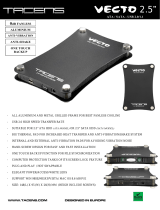
- 9 -
C. Intended Use
The e-medic Silence TP 2 & TP 1 are designed to serve as a medical PC for
general purpose usage in the hospital environment and for clinic review
purpose. It could be used as a computer device for Surgical, Radiology, PACS
(Picture Archiving Communication Systems), LIS (Lab Information Systems) and
Electronic Medical Record application.
It shall not be used in life-supporting systems.
WARMING: Critical diagnostic decision must not be based solely on images
displayed by this device.
CAUTION: Use suitable mounting apparatus to avoid risk of injury.
The user is not to touch SIP/SOPs and the patient at the same time.
The sound pressure level at the operator’s position according to IEC 704-1:1982
is no more than 70dB (A).
a) Grounding reliability can only be achieved when the equipment is
connected to an equivalent receptacle marked “Hospital Only” or “Hospital
Grade”.
b) Use a power cord that matches the voltage of the power outlet, which has
been approved and complies with the safety standard of your particular
country.
c) CAUTION: This power adapter “Sinpro MPU101-105” is a forming part of this
medical PC.
CAUTION:
Do not leave this equipment in an uncontrolled environment where the storage
temperature is below -20° C (-4° F) or above 60° C (140° F). This may damage
the equipment.

























